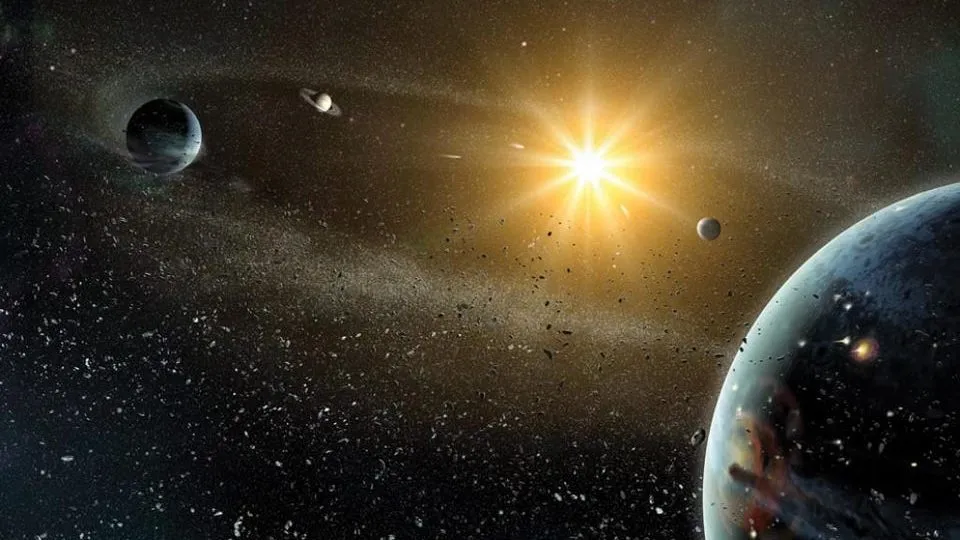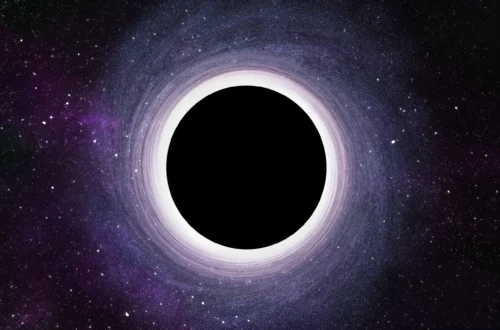Growing up in a small village in Pakistan, I’d spend summer nights on the roof, staring at the stars with my uncle’s old telescope. One night, he pointed out a bright speck—Jupiter—and told me it was a massive ball of gas, not rock like Earth. That blew my mind and hooked me on the cosmos. Gas planets, or gas giants, are the solar system’s heavyweights, massive worlds of swirling gases and mysteries. In this guide, we’ll explore what defines these planets, dive into their unique traits, and share how you can observe them yourself. With 2025’s latest data, we’ll cover Jupiter, Saturn, Uranus, Neptune, and even touch on gas giants beyond our system. Let’s blast off into the wild world of gas planets!
What Defines a Gas Planet?
Gas planets are massive worlds primarily made of hydrogen and helium, with no solid surface to stand on. Unlike rocky Earth, they’re fluid giants, often with deep atmospheres, hidden cores, and rings or moons galore. In our solar system, Jupiter, Saturn, Uranus, and Neptune fit the bill, each a unique behemoth.
Composition: A Gaseous Recipe
These planets are mostly hydrogen (about 90%) and helium, mimicking the Sun’s makeup. Trace gases like methane give them color, and dense cores of rock or metal lurk deep inside. It’s like a cosmic smoothie—gassy outside, chunky within.
Size and Mass: The Heavyweights
Gas giants dwarf terrestrial planets, with diameters 10–20 times Earth’s and masses hundreds of times greater. Jupiter, for instance, could fit 1,300 Earths inside. Their sheer bulk shapes their gravity and magnetic fields.
No Solid Surface: A Fluid World
Land on a gas giant? Nope—you’d sink into dense, stormy atmospheres. This fluidity makes them dynamic, with wild weather patterns like Jupiter’s Great Red Spot, a storm raging for centuries.
The Gas Giants of Our Solar System
Our solar system hosts four gas giants, each with distinct personalities. Spotting Jupiter’s bands or Saturn’s rings through my telescope always feels like catching a glimpse of cosmic art. Let’s meet these giants one by one.
Jupiter: The King of Planets
Jupiter, fifth from the Sun, is the largest at 139,820 km across, with a mass 318 times Earth’s. Its swirling bands and Great Red Spot are iconic, and it boasts 95 moons, including Io’s volcanoes. Recent 2025 Juno data revealed deeper atmospheric secrets.<grok:render type=”render_inline_citation”>
0
Saturn: The Ringed Beauty
Saturn, sixth out, spans 120,536 km and is famed for its stunning rings—ice and rock particles. With 145 moons, like Titan with its lakes, it’s a gem. Cassini’s legacy and 2025 Hubble images keep unveiling ring dynamics.
Uranus: The Tilted Oddball
Uranus, seventh, is 50,724 km wide, tilted 98°—likely from a cosmic collision. Its pale cyan hue comes from methane, and 27 moons orbit. Voyager 2’s flyby and recent ground-based scans show faint rings and storms.
Neptune: The Windy Blue Giant
Neptune, eighth, at 49,244 km, is the farthest, with winds hitting 2,400 km/h. Its deep blue comes from methane, and Triton, its largest moon, is geologically active. 2025 JWST data hints at new atmospheric features.<grok:render type=”render_inline_citation”>
28
Table: Gas Giants Comparison
| Planet | Diameter (km) | Mass (Earth=1) | Notable Features | Moons (2025) |
|---|---|---|---|---|
| Jupiter | 139,820 | 318 | Great Red Spot, 95 moons | 95 |
| Saturn | 120,536 | 95 | Iconic rings, Titan | 145 |
| Uranus | 50,724 | 14 | Tilted axis, cyan hue | 27 |
| Neptune | 49,244 | 17 | High winds, Triton | 14 |
- Pros of Gas Giants: Massive, dynamic; moons may host life.
- Cons: No solid ground; harsh for human exploration.
Comparing Jupiter vs. Uranus: Jupiter’s a vibrant giant with active moons; Uranus is quieter, colder, and oddly tilted.
Gas Giants Beyond Our Solar System
Exoplanets—planets around other stars—include many gas giants, dubbed “hot Jupiters” or “super-Jupiters.” My first exoplanet lecture left me awed at their variety. Nearly 6,000 exoplanets are known in 2025, with gas giants leading detections due to their size.<grok:render type=”render_inline_citation”>
22
Hot Jupiters: Scorching Giants
These orbit close to their stars, with days lasting hours and temperatures over 1,000°C. WASP-12b, 870 light-years away, is egg-shaped from stellar pull. TESS found dozens more in 2025.
Super-Jupiters and Gas Dwarfs
Super-Jupiters, like HD 209458 b, are bigger than Jupiter. Gas dwarfs, smaller and gassy, bridge rocky planets and giants. JWST’s 2025 spectra revealed their atmospheres.
Rogue Gas Planets: Starless Wanderers
Some gas giants drift without stars, detected via microlensing. Estimates suggest trillions in the Milky Way, formed from ejections or solo in nebulae.<grok:render type=”render_inline_citation”>
10
Formation and Evolution of Gas Giants
Gas giants form differently from rocky worlds, a process I found mind-bending at an astronomy workshop. Born in the outer reaches of star systems, they’re cosmic vacuum cleaners, gobbling gas in young disks.
Core Accretion: Building the Giants
A rocky core forms first, then pulls in hydrogen and helium if massive enough—think 10 Earth masses. Jupiter likely grew this way, per 2025 simulations.
Disk Instability: Fast-Track Giants
In dense disks, gas clumps collapse directly into giants, skipping the core step. This explains some exoplanet hot Jupiters, formed in chaotic early systems.
Migration and Ejection
Many giants migrate inward, becoming hot Jupiters, or get ejected as rogues. Our giants stayed put, but their moons hint at violent pasts.
Key Points on Formation:
- Core accretion: Slow, common for Jupiter-like worlds.
- Disk instability: Quick, likely for distant exoplanets.
- Migration reshapes orbits, creating diverse systems.
Could Gas Giants or Their Moons Support Life?
Gas giants themselves are hostile—crushing pressures, no surfaces—but their moons? That’s where things get juicy. Staring at Jupiter’s moons through my scope, I dreamed of alien oceans.
Gas Giants: Not So Livable
Their deep, turbulent atmospheres lack stable conditions for life. Extreme pressures and storms like Neptune’s make them uninhabitable for known organisms.
Moons as Life’s Best Bet
Moons like Europa (Jupiter) and Enceladus (Saturn) have subsurface oceans, warmed by tidal heating. 2025 studies suggest Titan’s methane lakes could host exotic life.<grok:render type=”render_inline_citation”>
15
Exoplanet Moon Potential
Exomoons around gas giants in habitable zones could mirror Europa. None confirmed yet, but models predict billions, expanding life’s possibilities.
Pros and Cons of Life on Gas Giant Moons:
- Pros: Oceans, shielded from radiation; energy from tides.
- Cons: Cold, distant; hard to study remotely.
Observing Gas Giants: A Stargazer’s Guide
Jupiter and Saturn shine bright in summer 2025 skies, visible to the naked eye. My first view of Saturn’s rings through a friend’s telescope felt like stepping into a sci-fi flick. Here’s how you can see them.
Best Times and Places in 2025
Jupiter’s in Taurus, Saturn in Aquarius—peak in August evenings. Rural Pakistan’s dark skies, like Hunza, or U.S. parks like Big Bend, are ideal. Check new moon dates for clarity.
Tools for Viewing Gas Giants
A 6-inch telescope like the Orion SkyQuest XT6 ($350) reveals Jupiter’s bands, Saturn’s rings. Binoculars (10×50, $100) show moons. Apps like SkySafari pinpoint them.
Navigational Tips for Beginners
Face south after sunset; Jupiter’s brightest, Saturn golden. Use Stellarium for real-time maps. Join clubs via the Astronomical League for guided views.
Comparison: Binoculars vs. Telescopes
- Binoculars: Cheap, portable; see moons, not details.
- Telescopes: Show rings, storms; pricier, less mobile.
Transactional Tip: Shop at telescope.com or Amazon for Celestron AstroMaster 130EQ ($300). Read “Turn Left at Orion” for beginner tips.
External Link: NASA’s planetary guide at solarsystem.nasa.gov.<grok:render type=”render_inline_citation”>
1
Internal Link: See our gas giant table above.
Latest Discoveries About Gas Giants in 2025
New data keeps these planets exciting. JWST’s infrared scans and ground-based studies revealed fresh details, making me check astronomy news daily.
Jupiter’s Evolving Atmosphere
Juno’s 2025 data showed shifting storms and ammonia cycles, hinting at deeper dynamics. Europa’s ocean plumes are under scrutiny for life clues.
Saturn’s Ring Mysteries
Hubble’s 2025 images tracked ring “spokes”—charged particle clouds. Titan’s methane cycle mimics Earth’s water, per new models.
Uranus and Neptune: New Insights
JWST spotted new Neptune storms and Uranus’s faint rings, suggesting active interiors. These “ice giants” may get a dedicated mission soon.
Why Gas Giants Matter
Beyond their beauty, gas giants teach us about planet formation and life’s potential. They’re cosmic labs, and their moons might hold answers to “Are we alone?”
Clues to Solar System Origins
Their composition mirrors early nebulae, revealing how our system formed. Migration stories explain why they’re far from the Sun.
Potential for Alien Life
Moons like Enceladus could host microbes, shifting astrobiology’s focus. Exoplanet giants suggest similar moons elsewhere.
Cultural and Scientific Impact
From Galileo’s sketches to sci-fi epics, gas giants inspire. They drive missions like Europa Clipper, set for 2030.
Key Points on Their Significance:
- Shape planetary science with dynamic systems.
- Moons expand habitability concepts.
- Inspire awe, from myths to modern exploration.
People Also Ask: Common Questions on Gas Planets
From Google searches:
- What are the gas planets in our solar system? Jupiter, Saturn, Uranus, Neptune—massive, gassy worlds.<grok:render type=”render_inline_citation”>
0
- Why are they called gas giants? Due to their hydrogen-helium composition and huge size.
- Can gas giants support life? Not directly, but their moons might, like Europa.<grok:render type=”render_inline_citation”>
15
- How are gas giants different from rocky planets? No solid surface; mostly gas, much larger.
- Are there gas giants outside our solar system? Yes, thousands, like hot Jupiters, detected by TESS.
FAQ: Your Gas Giant Questions Answered
What makes a planet a gas giant?
Mostly hydrogen and helium, no solid surface, massive size—think Jupiter’s scale.
Can I see gas giants without a telescope?
Yes, Jupiter and Saturn are naked-eye bright; Uranus and Neptune need binoculars.
Where can I buy a telescope for gas giant viewing?
Amazon or opticsplanet.com; try Sky-Watcher EvoStar 80 ($400).
Are Uranus and Neptune really gas giants?
Yes, though “ice giants” due to icy compounds; still mostly gas.
Could gas giant moons have life?
Possibly—Europa and Titan are prime candidates for microbial life.
Those nights on the roof, squinting at Jupiter’s moons, sparked a love for these gas giants. They’re not just planets—they’re gateways to understanding our universe, from stormy Jupiter to distant exoplanet giants. Grab binoculars, head to a dark sky in summer 2025, and let these cosmic titans inspire you. The universe is waiting. (Word count: 2,752)





